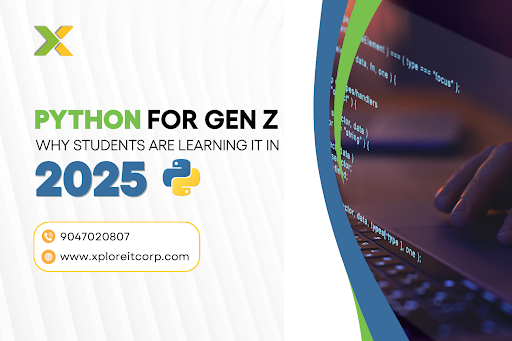How to Think Like a Python Programmer
Introduction Think Like a Python Programmer: Programming isn’t just about knowing the rules (syntax) or remembering stuff (libraries). It’s about training your brain to solve problems well. If you want to be a real Python developer, you’ve got to learn how to think like a python programmer. This means mixing smart thinking with Python’s easy-to-read style. You can be just starting out or trying to get better with a Python Full Stack Course in Coimbatore, it’s important to get the right mindset. Python was made to be clear and simple, which is shown in The Zen of Python. This idea changes not only the language but how good Python programmers fix problems. This article will go over how Python programmers think and do things. We’ll see how it’s different from other ways of programming and why it’s good for both beginners and pros. By the end of this, you’ll get what it means to think like a Python programmer and how it can help you get better. Places like Xplore IT Corp know it’s important to teach the mindset and the tech stuff in their Python Full Stack Course in Coimbatore. That’s how they make sure students become good developers. Embracing Pythonic Philosophy The main part on how to think like a Python programmer is understanding the language’s style. Python was made to be easy to read, and the way you write code should show what you are doing. This is shown in The Zen of Python, which has 19 ideas. Things like Beautiful is better than ugly, Simple is better than complex, and Readability counts aren’t just nice sayings—they change how Python developers write code. Python programmers care more about being clear than being smart. They keep things simple, even if it saves them a few lines of code. They know that code is read most of the time, so making it easy to understand is better than making it faster. This also goes with tools, where Python programmers like to use simple and easy ones. Breaking Down Problems: The Python Way A big thing about how to think like a Python programmer is breaking problems down in a Python-like way. Python developers break big problems into smaller pieces before they start coding. This goes well with Python’s style of keeping things separate and using simple functions. When they have a big coding problem, Python programmers find the main problem and take out the extra stuff. This is taught in great Python Full Stack Course in Coimbatore programs like the ones at Xplore IT Corp. Students learn to think before they type. Python allows you to program in a few ways step by step, with objects, and with functions so developers can pick how they want to break things down. A good Python programmer knows when to use each one. For changing data, they might use functions like map, filter, and reduce. For making things like real-world items, they’ll probably use objects. Knowing how to break down problems and pick tools makes someone a Python programmer. It makes the code not only work but easy to read and goes with Python’s style. Data-Centric Thinking Python is a great language for data because Python programmers see problems as how data is arranged and changed. They know what data to use, like lists, dictionaries, or sets, to fix a problem well. This is taught in a python training in Coimbatore, from places like Xplore IT Corp. Good Python developers know the right data is about being clear and making things fast. They know that dictionaries look things up fast, sets find members and take out doubles, and lists have things in order and can add or remove fast. This helps them fix problems. Also, Python programmers think about how data is changed. They see data moving in steps, with each step changing the data. This is seen in how Python programmers use tools like Pandas, NumPy, and web tools. In a Python Full Stack Course course in Coimbatore, students learn how to map problems to these steps. Python has tools like list comprehensions and map and filter that help with this. A Python programmer shows what should happen to the data. This goes into how Python programmers test programs. They look at how data changes in the program, using Python’s helper to see what happens at each step. This makes Python great for checking things out and seeing if the data helps with the answer. Readability and Upkeep First A main idea on how to think like a Python programmer is caring more about being easy to read and upkeep than other things. In other languages, being fast or smart is more important. Python programmers know code is read often, so making it readable is key. Python programmers take time to write clear code, using good names, comments, and structure. They follow PEP 8 to make things readable. They know it’s better to be clear than hidden and easy is better than not. This changes how Python code is written, from high to small. For example, Python programmers don’t use deep structures, hard one-liners, or smart tricks. They break problems down into steps with good names, even if things can be combined. When teaching how to think like a Python programmer, instructors say upkeep is about making code readable and able to be changed. Python programmers plan for changes, using style, files, and designs. In a Python Full Stack Course course in Coimbatore, students learn that upkeep code is a responsibility. Python’s tools help create and keep readable code. This is important for big projects. The Python Mindset: Leveraging Tools and Community for Efficient Coding A big part of how to think like a Python programmer is knowing Python’s tools and knowing when to use them. Python programmers say, Don’t redo something unless you want to learn. They see that Python is great because of the language and its tools in places like PyPI. In Python Full Stack Course in






